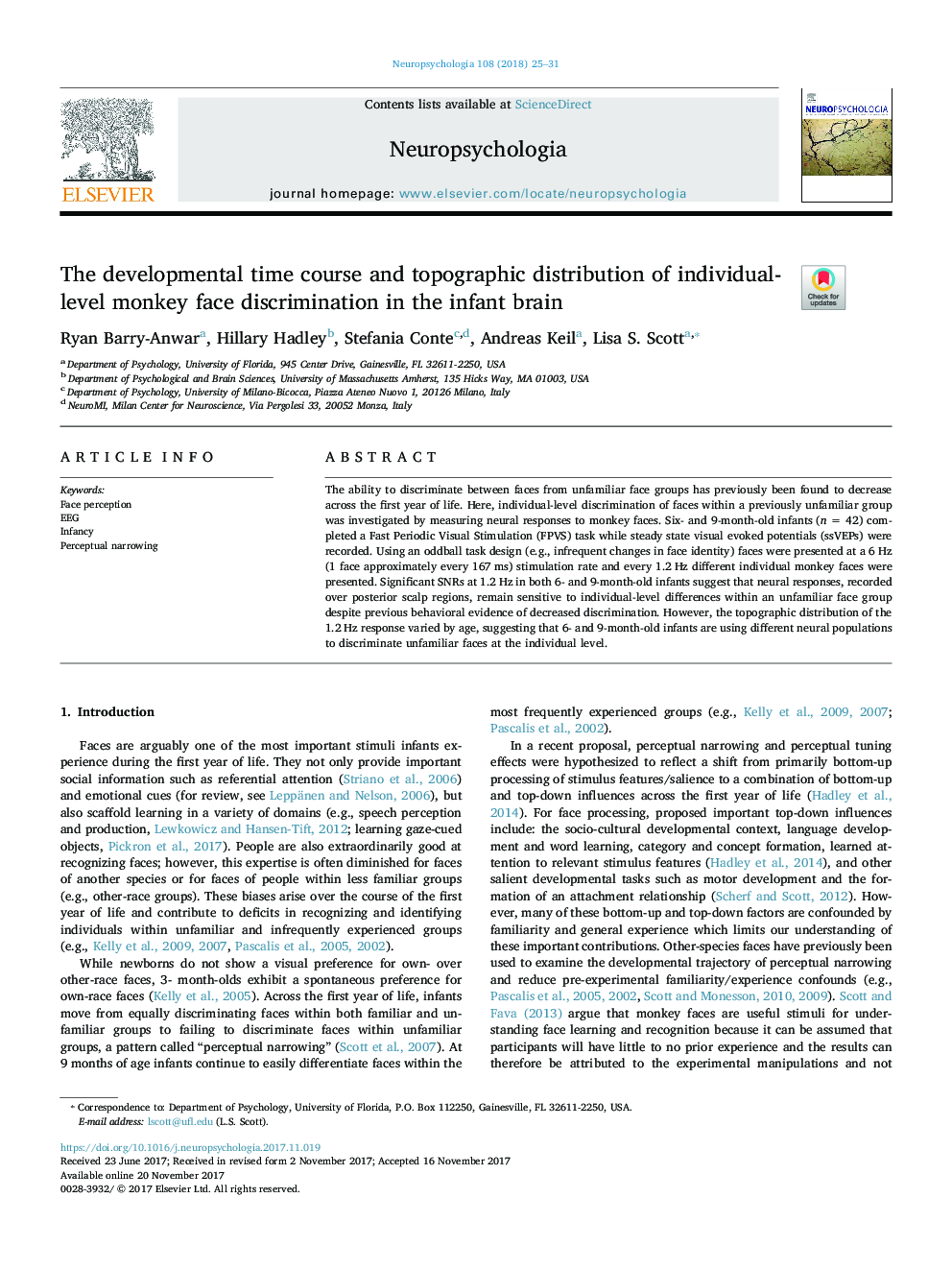| Article ID | Journal | Published Year | Pages | File Type |
|---|---|---|---|---|
| 7318135 | Neuropsychologia | 2018 | 7 Pages |
Abstract
The ability to discriminate between faces from unfamiliar face groups has previously been found to decrease across the first year of life. Here, individual-level discrimination of faces within a previously unfamiliar group was investigated by measuring neural responses to monkey faces. Six- and 9-month-old infants (n = 42) completed a Fast Periodic Visual Stimulation (FPVS) task while steady state visual evoked potentials (ssVEPs) were recorded. Using an oddball task design (e.g., infrequent changes in face identity) faces were presented at a 6Â Hz (1 face approximately every 167Â ms) stimulation rate and every 1.2Â Hz different individual monkey faces were presented. Significant SNRs at 1.2Â Hz in both 6- and 9-month-old infants suggest that neural responses, recorded over posterior scalp regions, remain sensitive to individual-level differences within an unfamiliar face group despite previous behavioral evidence of decreased discrimination. However, the topographic distribution of the 1.2Â Hz response varied by age, suggesting that 6- and 9-month-old infants are using different neural populations to discriminate unfamiliar faces at the individual level.
Related Topics
Life Sciences
Neuroscience
Behavioral Neuroscience
Authors
Ryan Barry-Anwar, Hillary Hadley, Stefania Conte, Andreas Keil, Lisa S. Scott,
